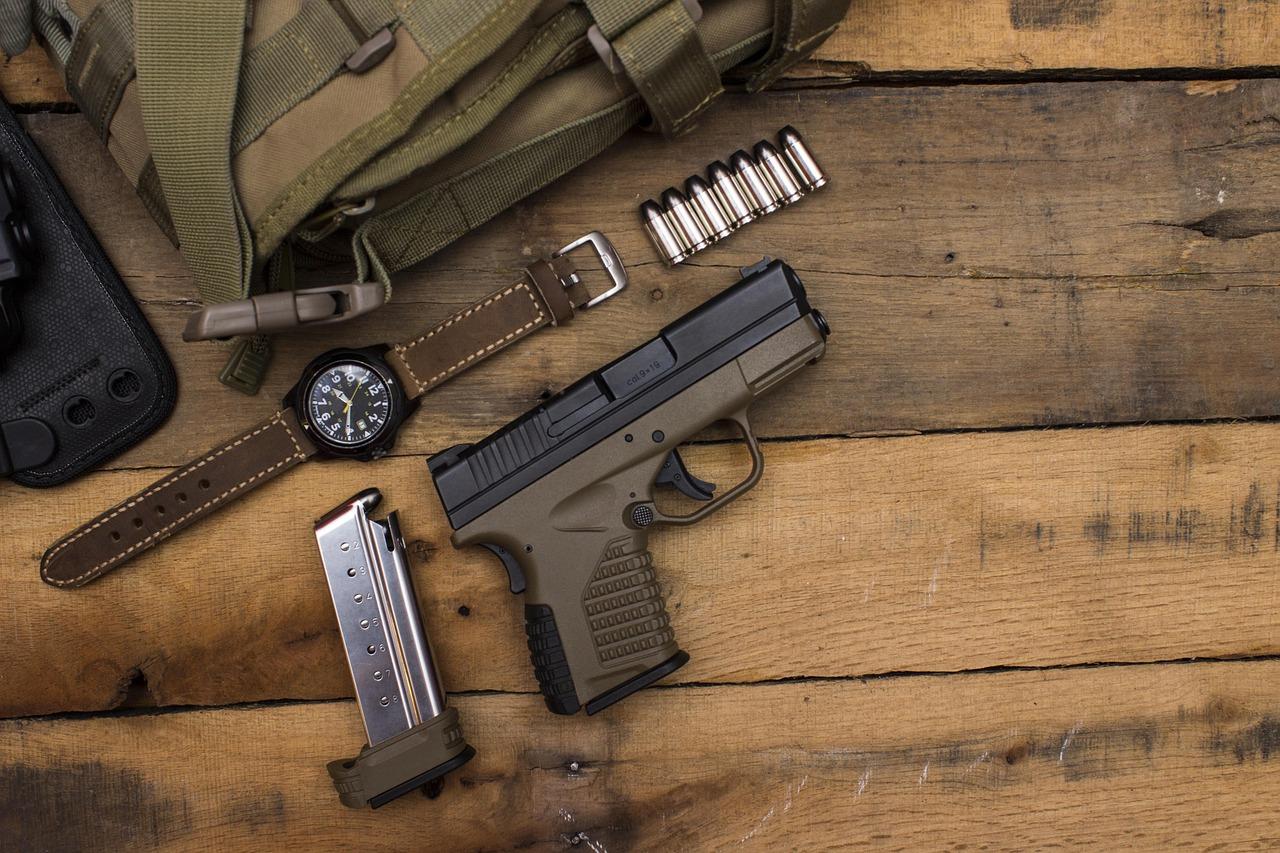Coharie Arms CA-415: A Complete Overview for New Owners

If you’re stepping into the world of piston-driven AR-style rifles, the Coharie Arms CA-415 is a name you’ll encounter. Built as an American take on the Heckler & Koch HK416 concept, the CA-415 blends the AR-15 platform’s modularity with a short-stroke gas piston system — a design choice that promises cleaner operation and potentially greater long-term reliability than a direct impingement system. This guide walks new owners through the rifle’s origins, core features and specs, how it handles, practical maintenance, useful accessories, buying advice, and ownership considerations so you can get the most from your CA-415.
Origins and design philosophy
The CA-415 was developed as an American-produced rifle inspired by the HK416 family. The HK416 itself was built around the AR-15/M4 architecture but replaced the direct impingement gas system with a short-stroke gas piston derived from designs like Heckler & Koch’s G36. The intent behind this approach is straightforward: keep the familiar ergonomics and parts commonality of the AR family while reducing the amount of hot, dirty gas and carbon that enters the receiver — which can improve reliability and reduce cleaning frequency under heavy use. The CA-415 follows this blueprint, offering a piston-driven solution intended for users who want the AR platform’s flexibility but prefer a piston system’s perceived robustness.
Key specifications (what to expect)
Exact configurations vary by manufacturer batch and any aftermarket modifications, but typical CA-415 specifications reported by multiple sources include chambering in 5.56×45mm NATO, a 16.5-inch barrel option as a common configuration, a collapsible stock, and a weight in the ~7.5–8 pound range (unloaded), depending on furniture and accessories. The rifle uses STANAG-compatible magazines and retains the AR-style ergonomics (controls, mag release, etc.) while incorporating the short-stroke piston and rotating bolt design. These attributes make it familiar to AR users while providing the benefits associated with piston operation.
How it shoots and handles
On the range, the CA-415 will feel very familiar to anyone who has shot an AR-platform rifle: similar balance, similar controls, and comparable ergonomics. The piston system can give a slightly different recoil impulse and reduced gas blowback at the ejection port and into the receiver, which some shooters prefer for comfort and reduced felt heat on sustained strings of fire. Barrel length, handguard length, and optic choices will heavily influence muzzle rise, sight radius, and grouping at various distances — but in its common 16–16.5" configuration the CA-415 is well-suited to both close-to-medium engagements (0–300 yards) and general duty/range use. Anecdotal reports from shooting communities suggest it performs solidly when properly set up, though, as with any rifle, reliability can be affected by ammunition choice, maintenance, and build quality.
Build quality and parts
Because the CA-415 is a derivative design rather than a single mass-produced model like some mainstream rifles, build quality can vary by production run and the specific parts used. The core concept — a piston operating system married to an AR-style lower and controls — is proven, but buyers should inspect manufacturers’ specifications for receiver material, barrel steel and treatment, bolt carrier group design, and the piston system’s construction. Many owners upgrade or replace parts such as the trigger, stock, and handguard to tailor weight, ergonomics, and feel. When assessing a used or new CA-415, ask about parts provenance, headspace checks, and whether any NFA or legal modifications were performed (depending on barrel length or other factors).
Reliability and common issues
Short-stroke piston systems are often touted for decreased fouling inside the receiver and better long-run reliability compared to direct impingement. That said, piston systems bring their own set of variables: gas block alignment, piston/rod wear, and timing of the system. Forum reports and user discussions about the CA-415 include both praise for its robustness and notes about stoppages or feeding issues in some examples — typically attributable to break-in, specific ammunition, or parts tolerances. As with any rifle, shooting a generous variety of quality ammunition, performing initial break-in cleaning and inspections, and resolving any feeding or extraction anomalies early will reduce the chance of intermittent problems later.
Maintenance for new owners
One of the CA-415’s selling points is reduced carbon in the receiver compared to direct impingement rifles, but you still must maintain it. Recommended practices include:
• Field-strip and inspect after any heavy session to check piston/rod condition and gas block alignment.
• Clean carbon from the piston, piston cup, and the bolt carrier tail regularly — piston systems concentrate fouling differently than DI systems.
• Use proper lubrication points on the bolt, cam path, and piston interface per manufacturer guidance.
• Keep spare extractors, gas rings (if applicable), and a small parts kit on hand for extended trips.
• If the rifle uses a proprietary piston geometry, follow the maker’s torque specs and check for loose fasteners after the first 100 rounds.
These steps will keep the CA-415 running smoothly and extend component life. If you’re unfamiliar with piston systems, consider a basic armorer’s course or a trusted gunsmith’s first-service check.
Customization and accessories
The CA-415’s AR-style lower and accessory rails open the door for a wide range of aftermarket upgrades. Typical owner modifications include:
• Optics: red dots and low-power variable optics (1–6x or 1–8x) for rapid target acquisition and mid-range flexibility.
• Handguards and rails: free-float handguards improve accuracy potential; ensure any replacement does not interfere with the gas system or piston travel.
• Stocks and grips: swap to a lighter or more ergonomic stock/grip for comfort and better control.
• Suppressors and muzzle devices: if you plan to use a suppressor, confirm the rifle’s gas system and buffer setup are tuned to function reliably with a can; many piston rifles are more suppressor-friendly but may still require adjustment.
• Magazines: use high-quality STANAG-compatible mags for reliable feeding. Magpul PMAGs are a common choice among AR owners.
When fitting parts, avoid guesswork — confirm compatibility with the CA-415’s piston system (some handguards or barrel nut systems can interfere) and check that barrel nut or gas block changes won’t alter headspace or gas timing.
Sighting and zeroing
Because the CA-415 is commonly used in a carbine configuration, zeroing for the role you intend is important. For general use:
• A 1–3x red dot is ideal for close work and quick target transitions; zero at 50–75 meters for practical point-of-aim/point-of-impact for most open-country work.
• A 1–6x or 1–8x optic gives flexibility for both close and medium ranges; zero at 100 meters for flatter trajectory and simplicity.
• Establish a consistent cheek weld and eye relief, and confirm zero using the ammunition you will carry most often.
Routine re-checks after recoil-intensive sessions or after swapping optics are a good habit; always verify point-of-impact changes after adding suppressors or changing barrel/handguard assemblies.
Legal and ownership considerations
As with any rifle, compliance with local, state, and federal laws is the owner’s responsibility. Depending on configuration (barrel length, fixed vs. collapsible stock, presence of certain accessories), there may be legal parameters to consider. Some configurations that appear in film or media (short barrels, SBRs, full-auto) require special paperwork and tax stamps under U.S. federal law; civilian semi-auto versions sold for sporting and defensive use usually avoid these classifications. Always verify transfer requirements, shipping restrictions, and whether the specific CA-415 variant you’re buying has any special considerations. If you’re outside the U.S., import and ownership rules can be entirely different — check your national laws before acquiring any firearm.
Where the CA-415 appears in popular culture
The CA-415 gained extra name recognition thanks to its appearance as a cinematic prop in action media; fans and armory blogs often point out a CA-415-style rifle used in film work (sometimes as a stand-in for the HK416). This visibility has helped interest among collectors and film buffs, but remember that movie-configured rifles are often modified for aesthetics and may differ from practical, range-ready examples.
Buying tips for new owners
If you’re shopping for a CA-415, whether new or used, follow these steps:
• Inspect the rifle in person when possible — check for tight receiver fitment, smooth stock operation, secure handguard and gas block, and clear markings.
• Ask about factory service records, any part replacements, and whether the rifle has been armoried or modified.
• Test-fire different ammunition brands if you can or ask the seller for documented reliability with common commercial loads.
• Confirm magazine compatibility and check the condition of any included magazines.
• When buying used, request bore and headspace checks — a reputable dealer or gunsmith can perform these if you’re unsure.
• If price seems too good to be true, look for hidden issues (excessive wear, replaced or improvised parts, or improper barrel/chamber work).
Comparing the CA-415 to other piston-driven AR alternatives and to direct-impingement ARs will help you weigh whether its advantages match your use case and budget.
Final thoughts
The Coharie Arms CA-415 occupies an interesting place for shooters who want AR-style ergonomics with piston-driven operation. It can be an excellent choice for range duty, training, and defensive roles when properly maintained and configured. Like any rifle, its performance depends on build quality, correct gas-system setup, good magazines, and responsible ownership. New owners should prioritize proper break-in, routine inspection of the piston and bolt components, and thoughtful optics and accessory choices to get the best out of the platform. If you’re comparing options or considering reselling, consult reputable marketplaces and specialized dealers for pricing and availability — and remember that reputable dealers and outlets like GunsAmerica can be useful resources when shopping or researching comparable rifles.






